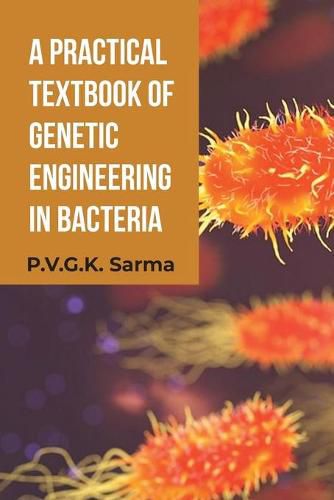Readings Newsletter
Become a Readings Member to make your shopping experience even easier.
Sign in or sign up for free!
You’re not far away from qualifying for FREE standard shipping within Australia
You’ve qualified for FREE standard shipping within Australia
The cart is loading…






This title is printed to order. This book may have been self-published. If so, we cannot guarantee the quality of the content. In the main most books will have gone through the editing process however some may not. We therefore suggest that you be aware of this before ordering this book. If in doubt check either the author or publisher’s details as we are unable to accept any returns unless they are faulty. Please contact us if you have any questions.
Genetic manipulation of bacteria is exploited largely in the laboratory because of their simple genetics and as they are easy to grow. These bacteria are predominantly important in producing large amounts of pure recombinant human proteins which can be used in medicine. The first example of this kind was shown in 1978 by Herbert Boyer working in a laboratory in University of California. He expressed human insulin gene in Escherichia coli. This product was approved by U.S. Food and Drug Administration for treating diabetes. The ease with which the bacteria could be manipulated has helped researchers in obtaining important molecules which otherwise are very difficult to purify from the organism in large amounts to be used in therapeutic purposes. The genetic sequences from a broad range of organisms can be easily ligated to a plasmid and transformed into bacteria for both storage and modification. Bacteria are simple to grow, divide quickly, easy to transform, and can be stored at -86 DegreesC more or less indefinitely. The moment a gene is isolated it is very easy to store in bacteria and this provides limitless supply of active material for research. This has led to the development of huge number of recombinant plasmids for manipulating DNA/genes of different prokaryotic and eukaryotic organisms. CONTENTS: Chapter 1 - Cloning of DNA Fragments into Plasmid Vectors, Chapter 2 - Cloning of DNA fragments into Phage Vectors, Chapter 3 - Cloning in cosmid vectors, Chapter 4 - Techniques to understand the functionality of a gene, Glossary, Index.
$9.00 standard shipping within Australia
FREE standard shipping within Australia for orders over $100.00
Express & International shipping calculated at checkout
This title is printed to order. This book may have been self-published. If so, we cannot guarantee the quality of the content. In the main most books will have gone through the editing process however some may not. We therefore suggest that you be aware of this before ordering this book. If in doubt check either the author or publisher’s details as we are unable to accept any returns unless they are faulty. Please contact us if you have any questions.
Genetic manipulation of bacteria is exploited largely in the laboratory because of their simple genetics and as they are easy to grow. These bacteria are predominantly important in producing large amounts of pure recombinant human proteins which can be used in medicine. The first example of this kind was shown in 1978 by Herbert Boyer working in a laboratory in University of California. He expressed human insulin gene in Escherichia coli. This product was approved by U.S. Food and Drug Administration for treating diabetes. The ease with which the bacteria could be manipulated has helped researchers in obtaining important molecules which otherwise are very difficult to purify from the organism in large amounts to be used in therapeutic purposes. The genetic sequences from a broad range of organisms can be easily ligated to a plasmid and transformed into bacteria for both storage and modification. Bacteria are simple to grow, divide quickly, easy to transform, and can be stored at -86 DegreesC more or less indefinitely. The moment a gene is isolated it is very easy to store in bacteria and this provides limitless supply of active material for research. This has led to the development of huge number of recombinant plasmids for manipulating DNA/genes of different prokaryotic and eukaryotic organisms. CONTENTS: Chapter 1 - Cloning of DNA Fragments into Plasmid Vectors, Chapter 2 - Cloning of DNA fragments into Phage Vectors, Chapter 3 - Cloning in cosmid vectors, Chapter 4 - Techniques to understand the functionality of a gene, Glossary, Index.